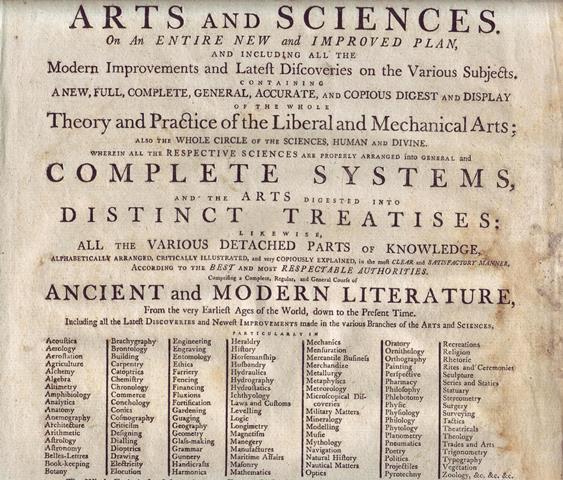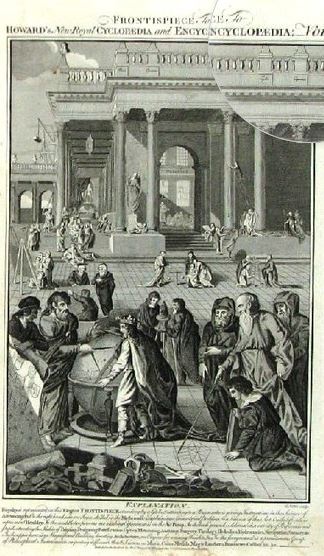 Loading... Please wait...
Loading... Please wait...All prices are in All prices are in AUD
Categories
- Home
- Blog History Revisited
- 18th Century Age of Enlightenment, Industry, Transportation & Antique Prints
18th Century Age of Enlightenment, Industry, Transportation & Antique Prints
Posted by ©Sandra Ker Owner and CEO of the Antiquarian Print Gallery 1989-2014 Unley Rd , SA, South Australia. Dealer in Antique Prints and Maps. on 15th Aug 2015
Enlightenment, Industry, Convicts and Sydney Cove
In London 1788 Alexander Hogg published 3 Volumes- The New Royal Cyclopedia,and Encyclopedia, or Complete, Modern and Universal Dictionary of Arts and Sciences…Modern Improvements & Latest Discoveries…” The copper plate engravings, printed in 1788, reveal a fraction of the knowledge born from the AGE OF ENLIGHTENMENT (c.1650) & Industrial Revolution (c.1750). This technological awareness belies the brutality on the eve of European Colonisation of their newest colony, Australia, to those transported and those Aboriginal inhabitants.
Age of Enlightenment (c.1650-c1820)
 “Era in Western philosophy, intellectual, scientific and cultural life, where reason was advocated as the primary source legitimacy and authority.”
“Era in Western philosophy, intellectual, scientific and cultural life, where reason was advocated as the primary source legitimacy and authority.”
This was an time when “Reason” was preferred as the “primary source and basis of legitimacy and authority”. This movement helped create the intellectual framework for the American and French revolutions among others. The philosophical developments of that age, and their impact in moral and social reform, aspired towards governmental consolidation, primacy of the nation-state and eventually greater rights for the common people.
Industrial Revolution (1760-1840)
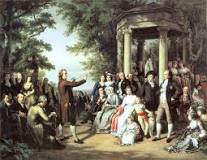
The Industrial Revolution reshapes humanity and the Planet.
From the late 1700s to the early 1800s this maturing of human consciousness was co-existing with the birth of the Industrial Revolution when major changes were happening in rural and urban Britain. There were many advancements in knowledge of the natural world along with the inventions that fueled this mechanical revolution. A growing Middle Class had the time to smell the roses and money to educate themselves and their children. However the lower class suffered from mass consolidation of land like the Scottish Highland Clearances. This forced rural exodus to revolutionize land use and profitability, tearing huge holes in local societies. This was replicated across Britain, with displaced rural laborers driven to urban centers where crime was a growth industry.
Bound for Botany Bay
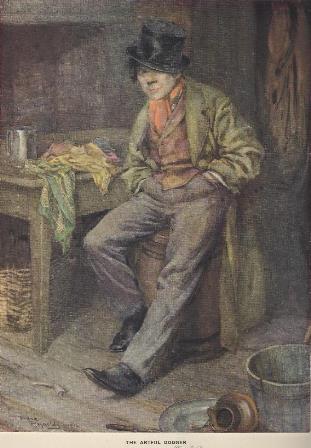 Artful dodger from OLIVER TWIST, illustrator Frank Reynolds, 1911
Artful dodger from OLIVER TWIST, illustrator Frank Reynolds, 1911
From this heady political, social and technological canvas the First Fleet, lead by Captain Arthur Phillip, set sail with a cargo of convicts and marines bound for Botany Bay. The planning of Britain’s colonization of NSW was a response to overcrowded prisons, a product of the agrarian revolution in Britain (rural land closures etc.) The American Revolution put an end to that transportation option, the only way to relieve the over-crowding in prisons was to establish a Penal Colony in the lands of NSW discovered by Captain James Cook in 1770.
Southern Continent
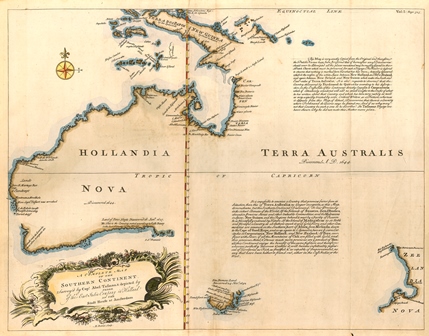 Southern Continent, published by the Dutch in 1644 after the return of Abel Tasman.
Southern Continent, published by the Dutch in 1644 after the return of Abel Tasman.
He gave a cartographic identity to East Coast of New Holland: the Dutch had already began the challenge recording the aggregate Dutch “Southern Continent”explorations in a 1644 map published after the return of explorer Abel Tasman. The 11 ships embarked on the 15,000 mile voyage on the 13th May 1787 to establish the first European colony in New Holland (later Australia). It marked the beginnings of transportation to Australia. Between 1788 and 1850 the English sent over 162,000 convicts in 806 ships.
Indigenous Eora Tribe: Not a Vioable Solution for All

The Cadigal band of the Eora Tribe inhabited the Cove that provided them with fish, drinking water and shelter.
The date of arrival of the First Fleet at Port Jackson (26 January) is today celebrated as Australia Day but notably a day of mourning for the indigenous inhabitants who were classified as “uncivilised” as they “did not cultivate the land.”
Conclusion
A taste from the title page of the weighty content.
These three volumes illustrate with copper engravings the technology that provide the inhabitants of the new millennium a window of evidence to Europe’s progress in scientific and mechanical advancements in 1788. It is a stick to measure the not only the pace, but to reflect on how it has changed us for better, or sometimes worse.
© Sandra Ker, Antiquarian Print Gallery 2015
Recent Posts
- » Lady Sarah Lennox, King George III & The Honourable George Napier
- » Schomburgk's Botanic Garden & Park Plan, 1874
- » "City of Adelaide" Clipper Ship - What is Old Is New Again
- » Napoleon, Hudibrastic Poetry, Doctor Syntax & the Power of Satire
- » Colonial Melbourne to Albury "Parlour Car" Photo Connects to Adelaide Past & Present






